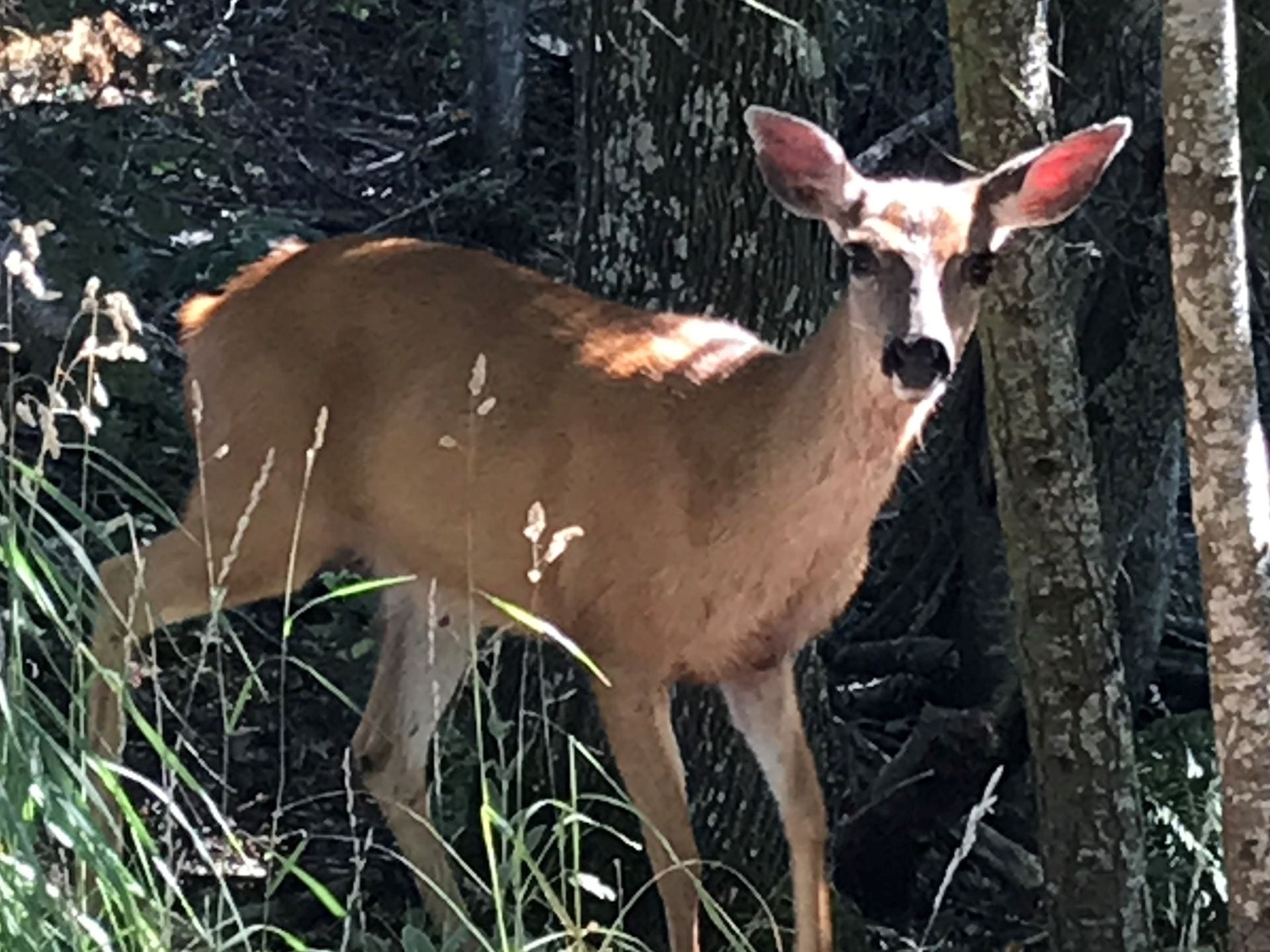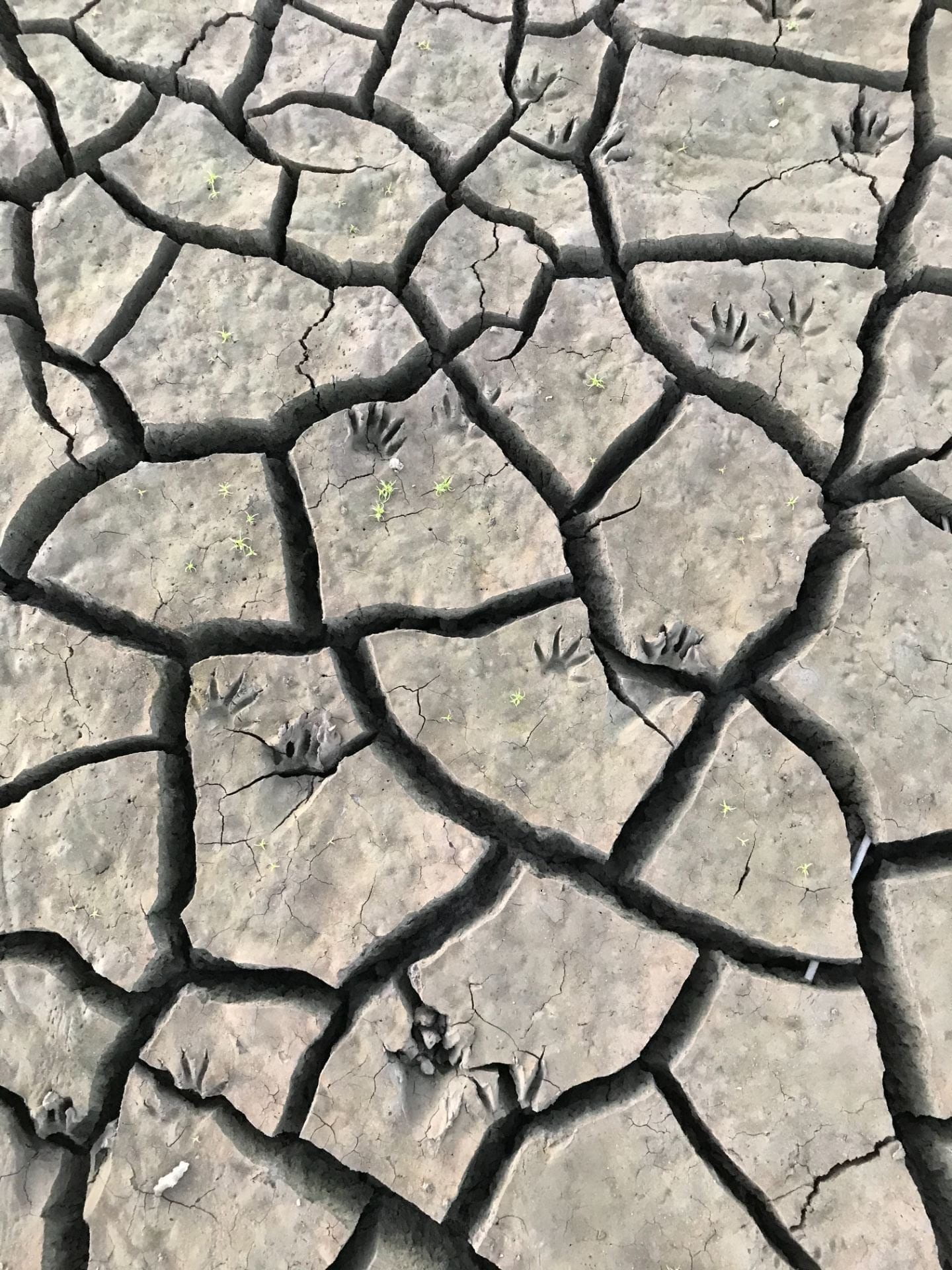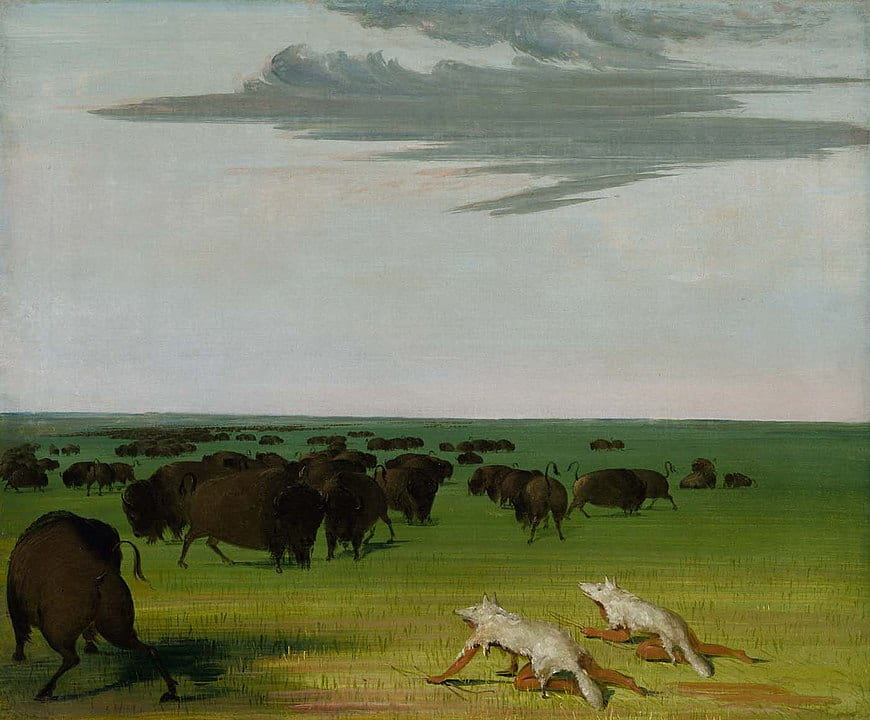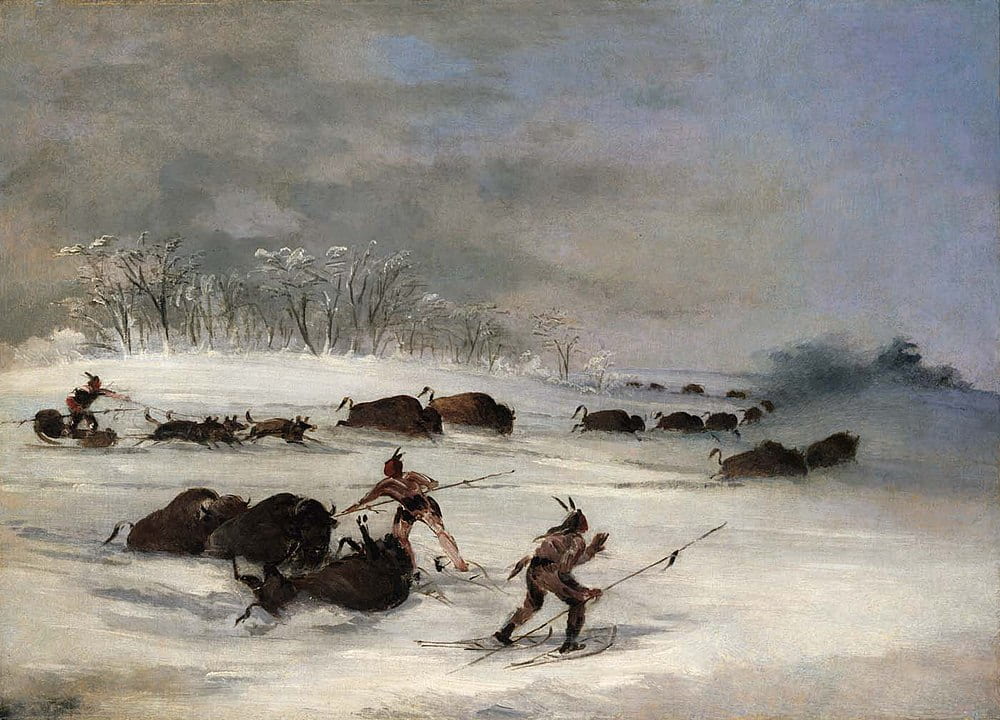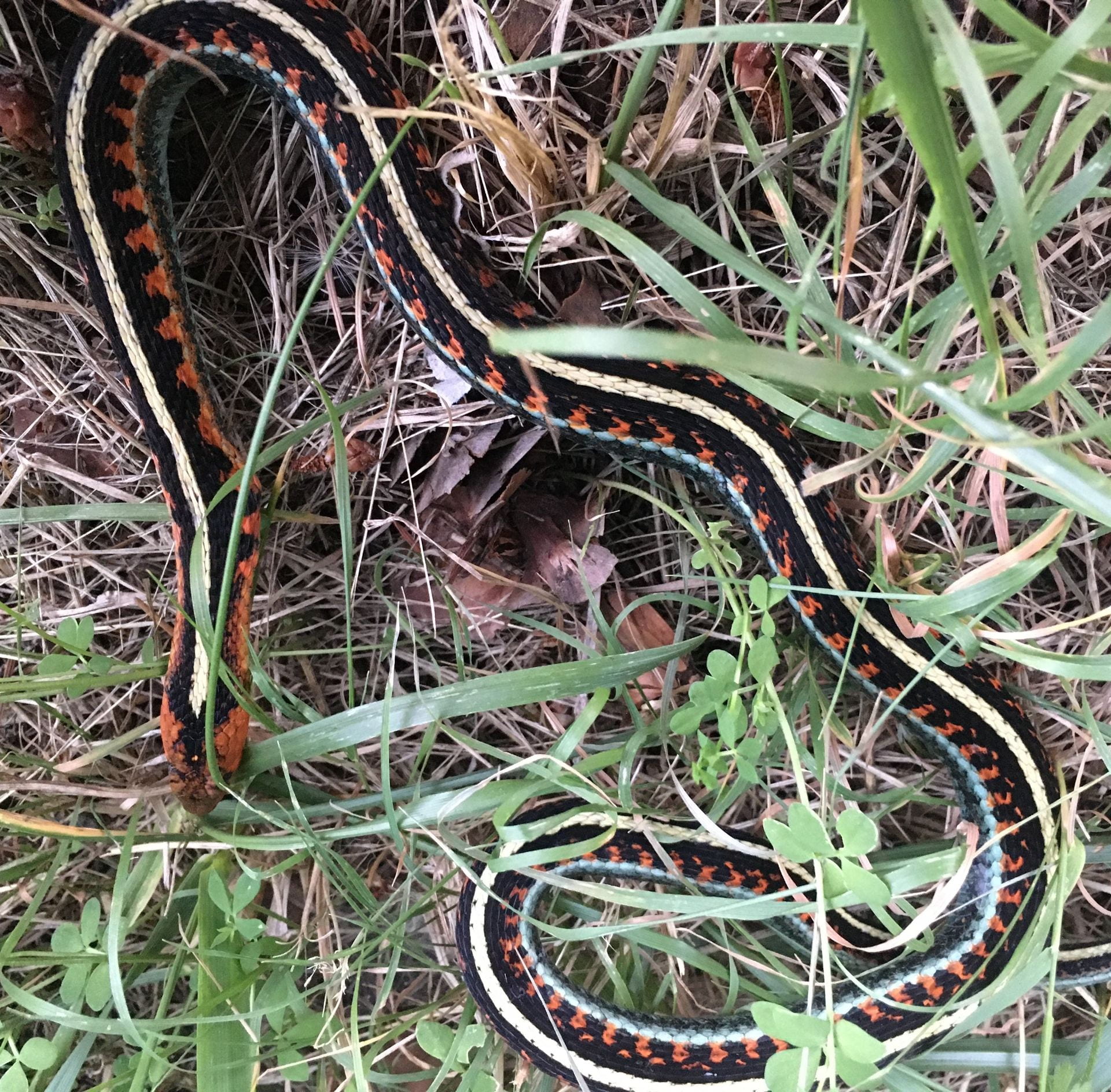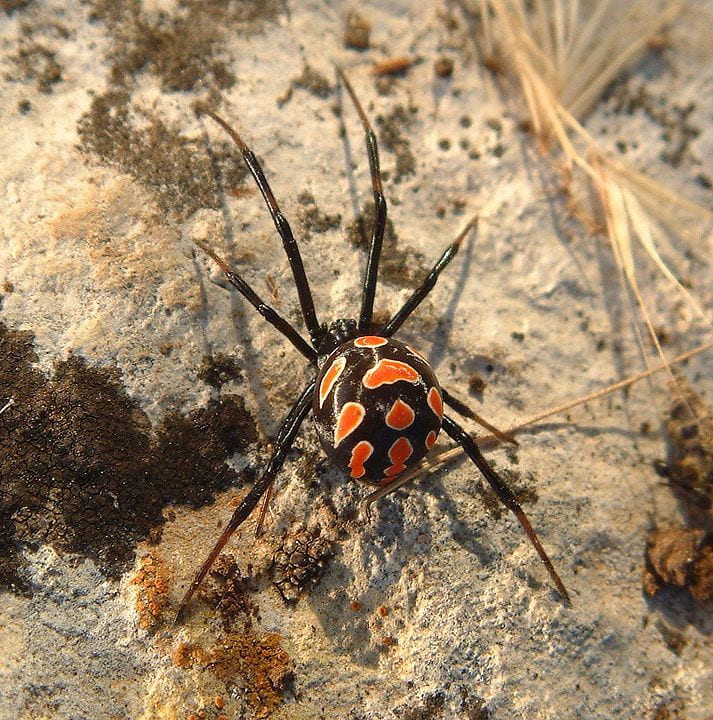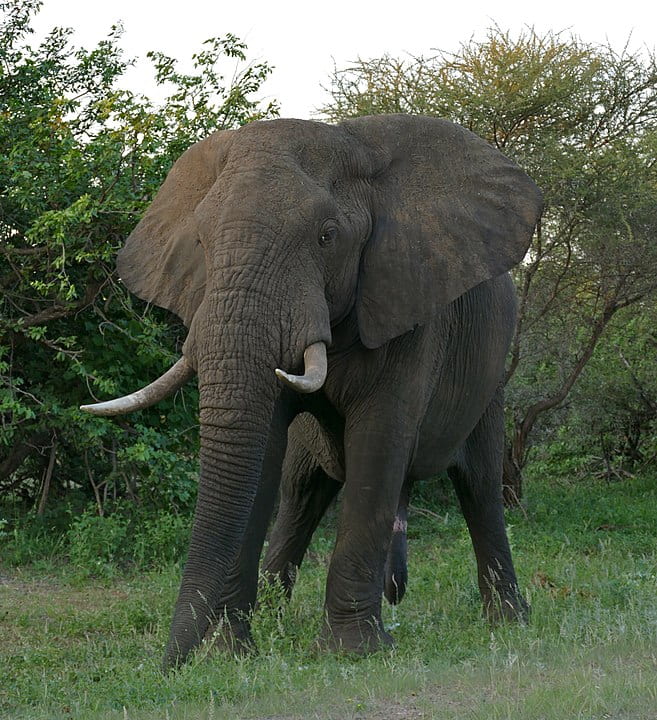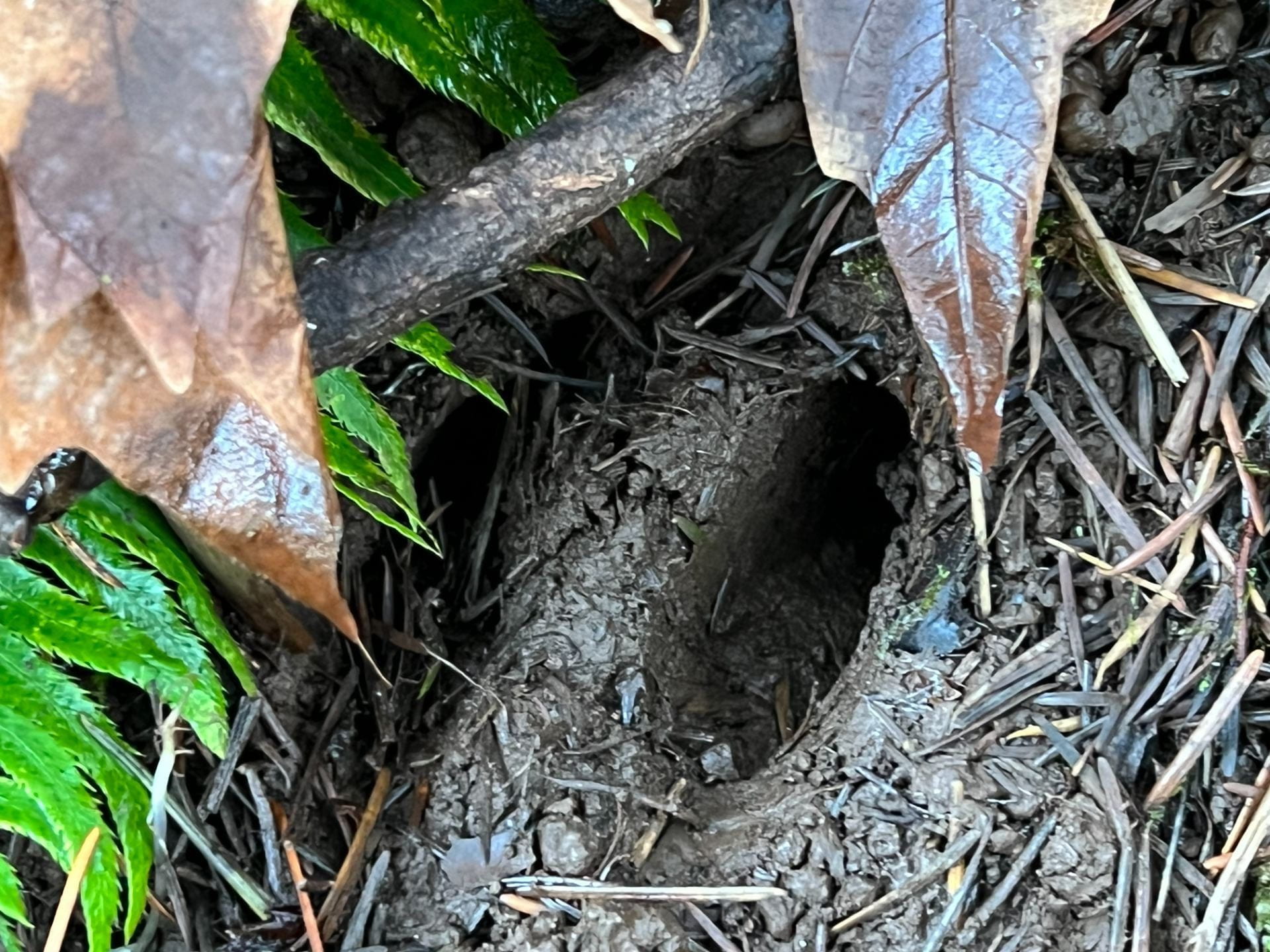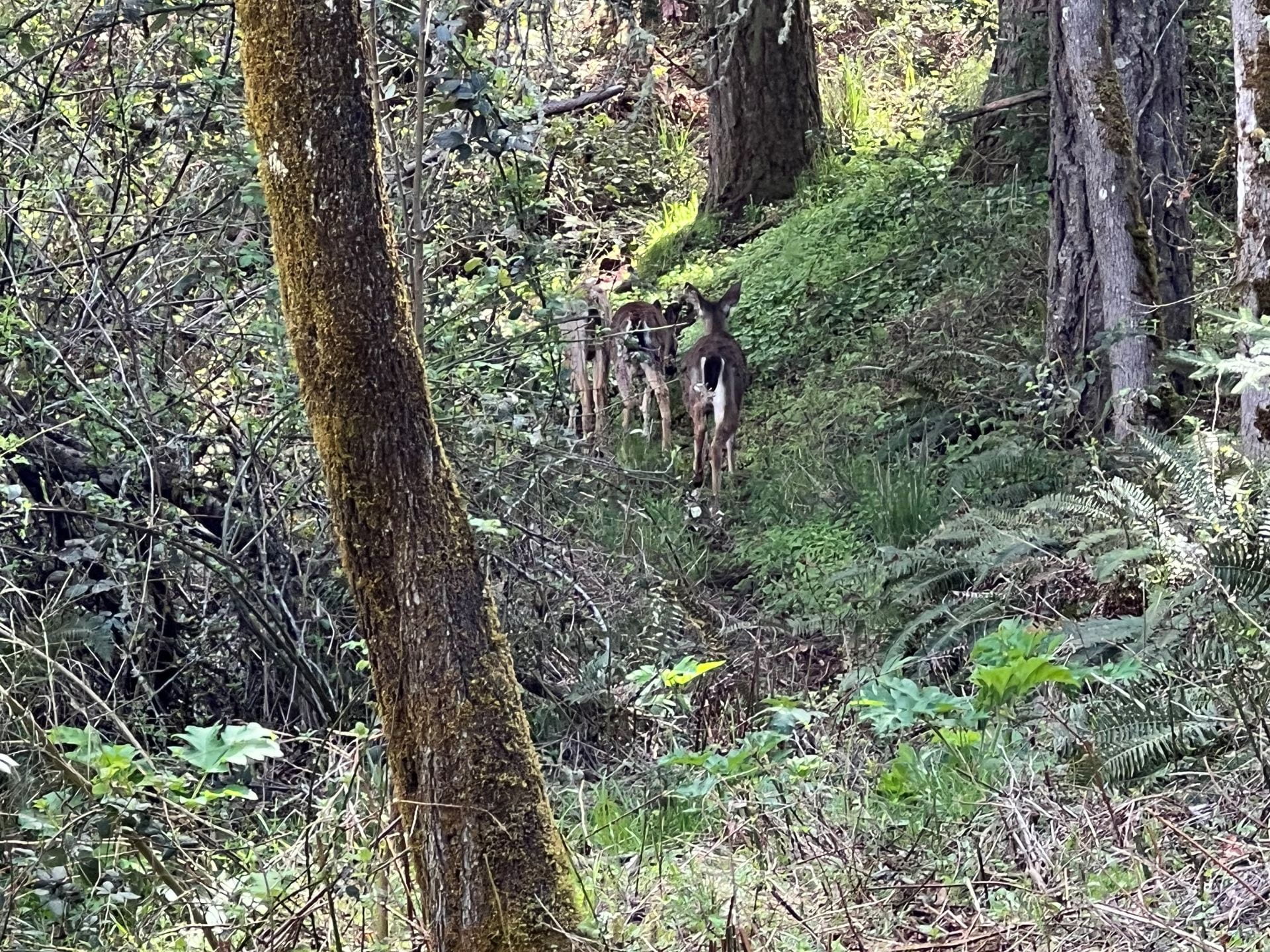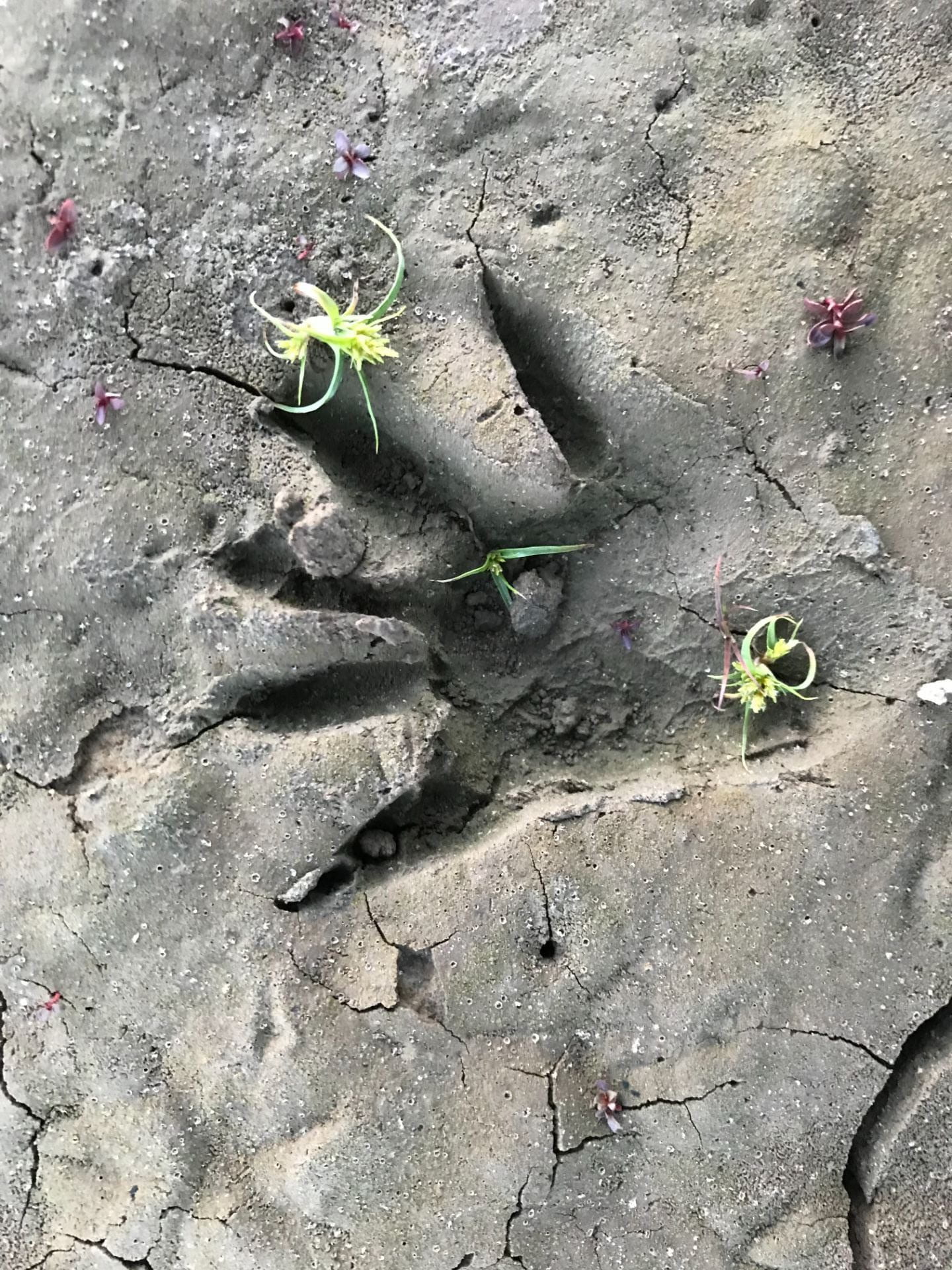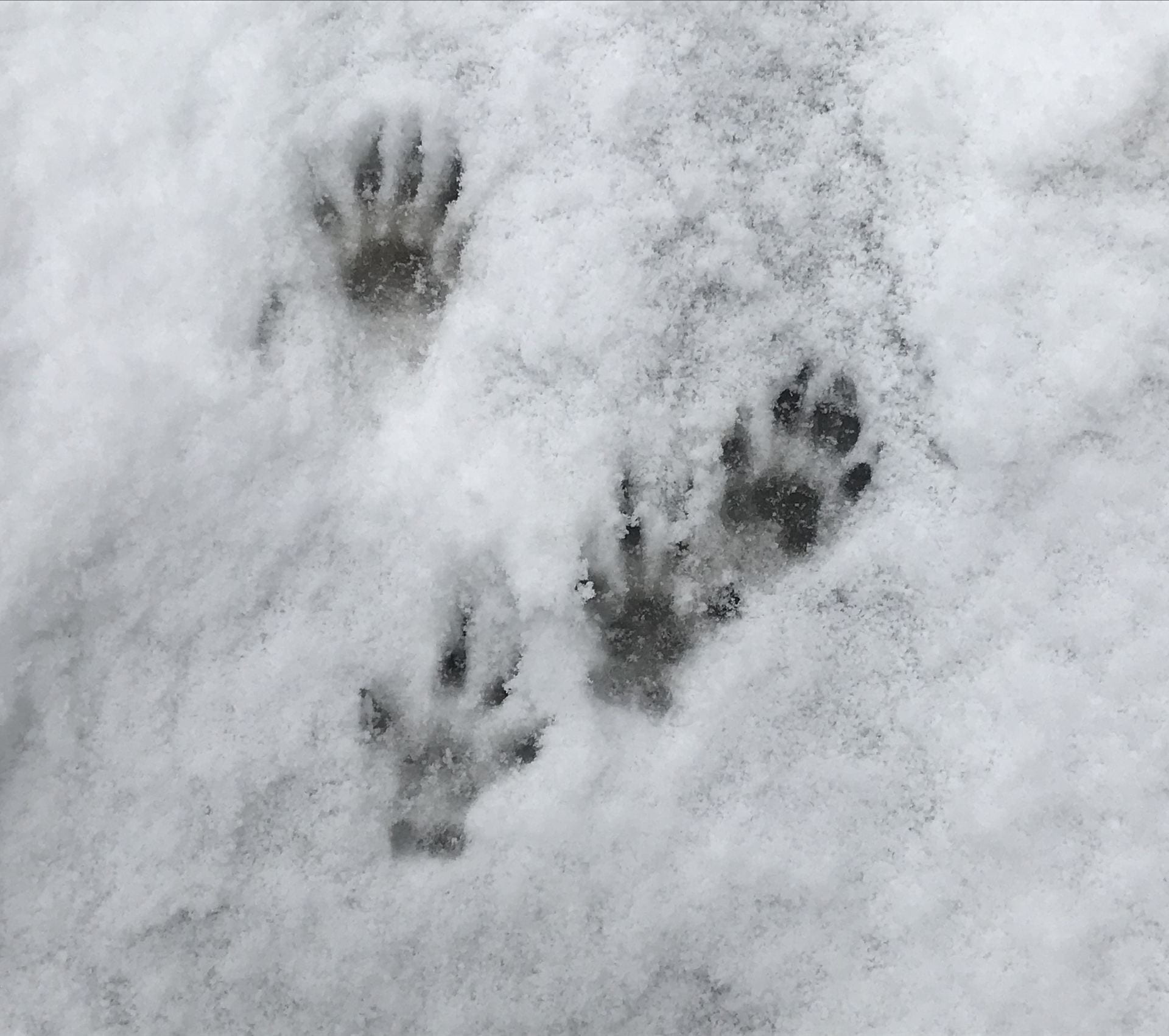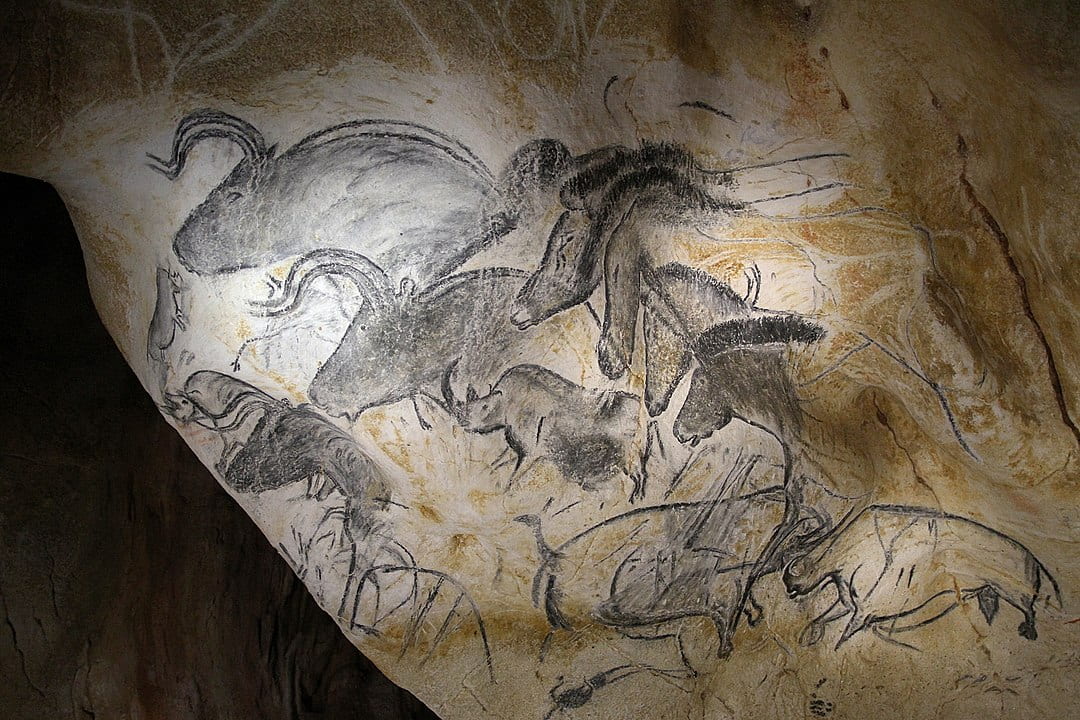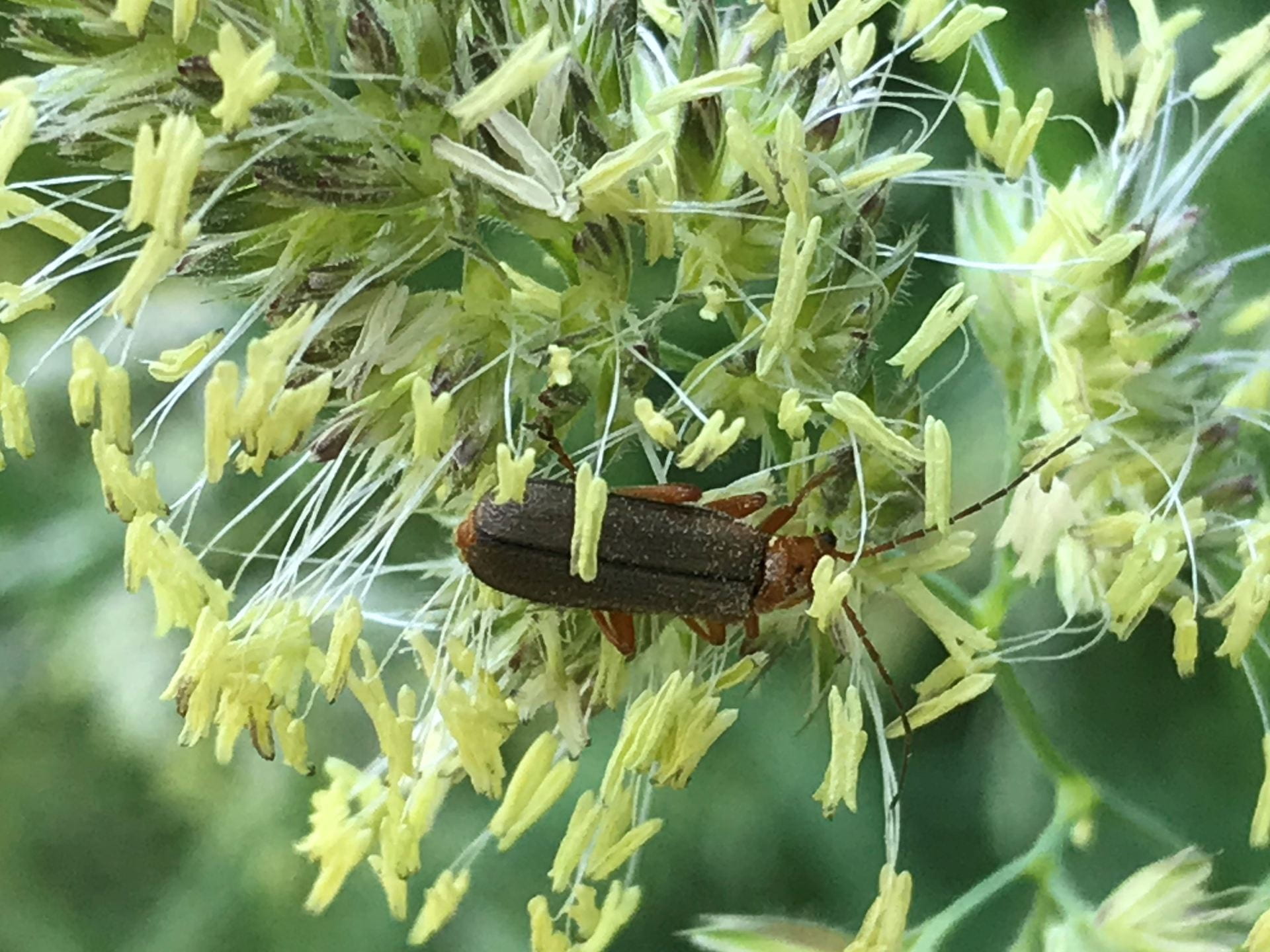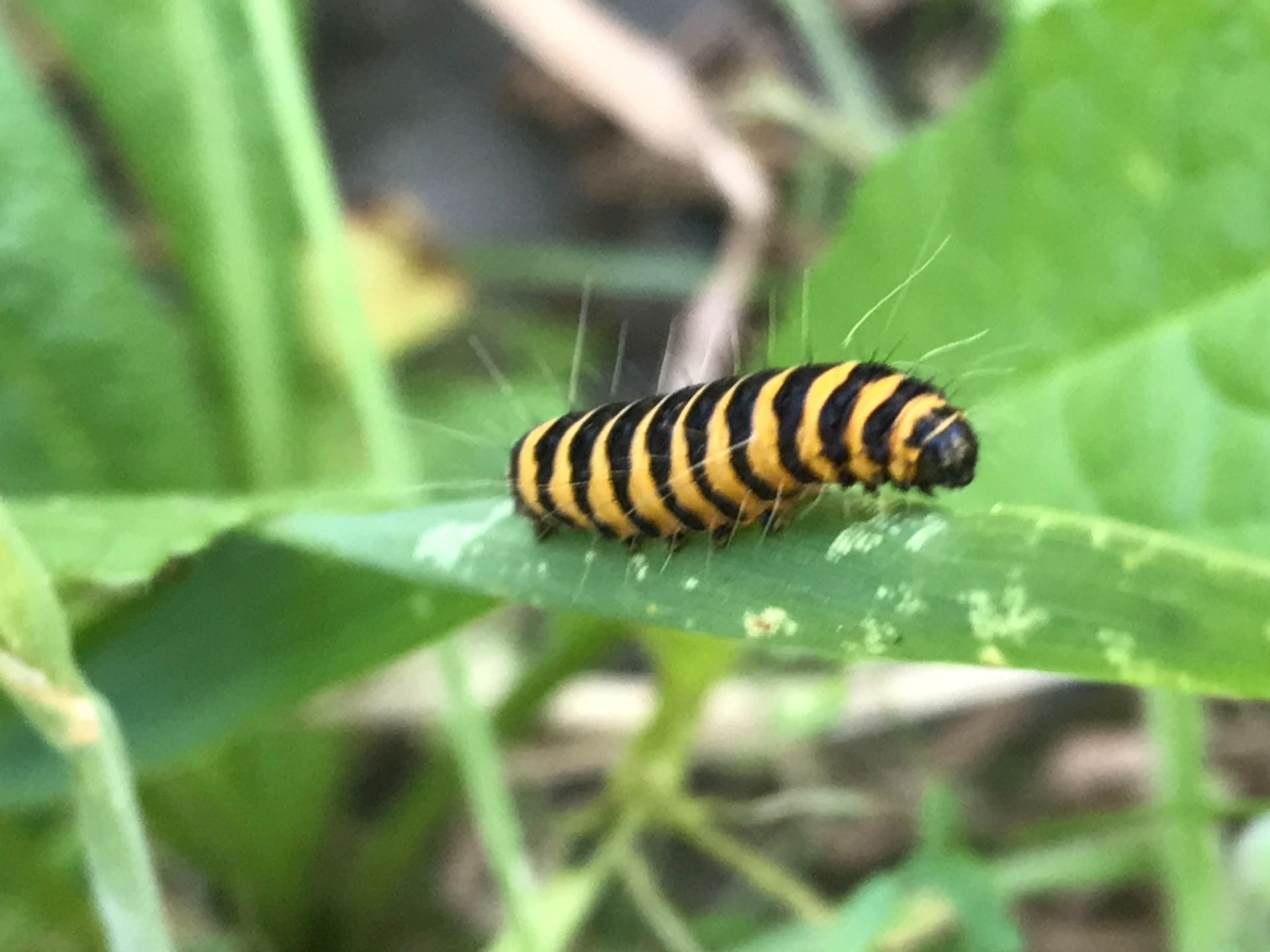Zoology
Data-Based Reasoning
“Hunters sought to develop an ability to think like game animals in order to predict their behavior. They were trained to interpret the environment from an animal’s perspective. . . . In order to understand the animals, a person had to be well informed.”
—Ridington (1982:472-473)
Photo by Michelle Scalise Sugiyama
For most of their evolution, humans have lived in close contact with other animal species. Our ancestors depended on hunting for food, clothing, and implements, and were also vulnerable to being hunted themselves. Capturing prey and evading predators demanded extensive zoological knowledge—the equivalent of an advanced degree in biology.
Making a living by hunting requires an exhaustive mental catalogue of local fauna, with information on how to detect, locate, and identify them. Other key information is whether–and how–they are useful. Locating, stalking, and capturing animals requires fine-grained knowledge of their traits, behavior, diet, habitat, and interrelationships. This expertise enables hunters to predict where game is likely to be at present and in the future, which is instrumental to deciding where and when to hunt, set traps, and move camp. Zoological knowledge is also instrumental in tracking—i.e., detecting, interpreting, and following the marks that animals make on the landscape as they go about their activities. It is also critical to selecting the most efficient means of capturing a given species under current conditions, and getting close enough to the animal to dispatch it.
Photo by Michelle Scalise Sugiyama
Buffalo Hunt under the Wolf-skin Mask by George Catlin (c. 1832-1833)
“While the herd of buffaloes are together, they seem to have little dread of the wolf. . . . [The hunter] places himself under the skin of this animal, and crawls for half a mile or more on his hands and knees, until he approaches within a few rods of the unsuspecting group, and easily shoots down the fattest of the throng.”
–Catlin (1841)
“In the dead of the winters . . . where horses cannot be brought into the chase with any avail, the . . . [hunter] runs upon the surface of the snow by aid of his snow shoes, which buoy him up, while the great weight of the buffaloes, sinks them down to the middle of their sides . . . completely stopping their progress.”
–Catlin (1841)
Sioux Indians on Snowshoes Lancing Buffalo by George Catlin
Photo by Erica Lyon
Zoological knowledge is also vital to coping with animal threats. Humans are vulnerable to injury by their prey and to attack by predators. Scavenging also presents problems: humans may have to drive off predators to steal a kill or to prevent their own kill from being stolen. Even small creatures may pose a threat: biting, stinging, and venomous organisms can inflict temporary or permanent injury, or even death. In short, acquiring animal resources and evading animal hazards depends on a vast fund of animal facts accumulated over generations.
“The most frequently mentioned causes of traumatic death were attacks by bear, mountain lions, bites from poisonous snakes, and insects such as black widow spiders and scorpions.”
—Bean (1972:79)
Photo from Wikimedia
Photo by Bernard Dupont
“one’s safety on a hunting or collecting mission in the veld is of paramount importance. Weather . . . and animals, including lions, elephants, puff adders, and cobras, continue to be a real threat.”
—Low (2009:75)
Hide and Seek
“The information that can be gathered from a track print or trail includes the age, sex, and health of its maker, its direction and speed of travel and the time since it was made. From these, inferences can be drawn as to the present location of an animal.”
—Mithen (1988:298)
One of the most difficult parts of hunting is locating game. To do this, hunters depend heavily on their ecological knowledge, using a variety of ecological cues to predict where animals are likely to be and to detect their presence. One of the most informative cues is animal sign. These signs, or spoor, are marks made on the landscape by animals–intentionally or unintentionally–in the course of their activities. These marks include tracks, trails, claw marks, wallows, nests, excretions, bits of fur or feathers, the remains of a meal, and bent, browsed, or trampled foliage. Hunters also rely on audio cues to detect, identify, and track animals. From a distance or under conditions of poor visibility, the calls and other sounds that animals make can be more discernible than their shape, size, or markings. Given that some species prey on humans, detecting and identifying animals from a distance is useful for deciding whether to approach or avoid them.
Photos by Michelle Scalise Sugiyama
Photo by Michelle Scalise Sugiyama
“a hunter’s keenest edge is knowledge of the animal he stalks, knowledge based on years of close and careful observation.”
—Nelson (1997:xiii)
Tracking dates back hundreds of thousands of years, and may very well be the oldest science (Liebenberg 4:12). Like other scientific disciplines, tracking utilizes data-based reasoning: it involves searching for signs of an animal’s presence, generating hypotheses regarding what gave rise to the sign, and using those hypotheses to make predictions about the animal’s current location, activity, and condition. Hypotheses are informed by two additional lines of empirical evidence: detailed observations of (1) animal morphology, habitat, diet, behavior, and life history; and (2) the effects of air and ground conditions on animal sign. Predictions derived from animal sign—and the validity of the observations and hypotheses they are based on—are tested every time an individual goes hunting.
Photo by Michelle Scalise Sugiyama
“I believe it is . . . an error to suppose that there was no people anywhere who insisted on empirically, and hence scientifically verified basic concepts before Galileo. Prevalent as the latter belief is, it is nonetheless rubbish.”
—Northrop (1950:127)
Photo by Michelle Scalise Sugiyama
Just as scientists disseminate their findings among their peers, hunters share and discuss their observations with other hunters. This benefits everyone by increasing the number of observations available to each hunter, thereby increasing the accuracy of predictions. Thus, like other sciences, tracking is based on the generation and testing of hypotheses using repeated empirical observations of the natural world.
“each man usually reports to the others in considerable detail concerning every game item that he encountered that day, and the outcome of the encounter.”
–Kaplan & Hill (1992:196)
Image by Claude Valette
God is in the Details
Photos by Michelle Scalise Sugiyama
The tiniest of creatures may point the way to large game animals when the latter are nowhere to be seen. A case in point is the information provided by the buffalo-bug: among the Oglala, this insect “was known to tell scouts the direction in which buffalo could be found, for they are especially sensitive to the vibrations of the earth. Also they always faced in the direction of a herd, which could be a great distance away” (Brown 1992:37).
“one should pay attention to even the smallest crawling creature for these too may have a valuable lesson to teach us, and even the smallest ant may wish to communicate to a man.”
—Black Elk (Brown 1992:37)
The Science of Interpretation
“It’s a whole range of tracks and signs in nature that indicates the passing of an animal–the way grass has been trampled, the way a pebble has been disturbed out of its little socket, the way a branch has been bent in the direction of travel.”
–Liebenberg (5:41)

Tracks
Animal footprints can provide information about species, sex, age, physical condition, travel direction and speed, whether the animal is alone or with others, whether and on what it is feeding, and when the print was made. This information is essential for deciding whether an animal is worth pursuing. Other sign, such as fur caught on branches or fallen to the ground, can be used to ascertain a species’ presence. Tracks can also be used to estimate prey densities: a plenitude of tracks indicates an abundance of game in the area; conversely, an absence of tracks indicates that game is scarce. This information is critical for determining when and where to move camp.
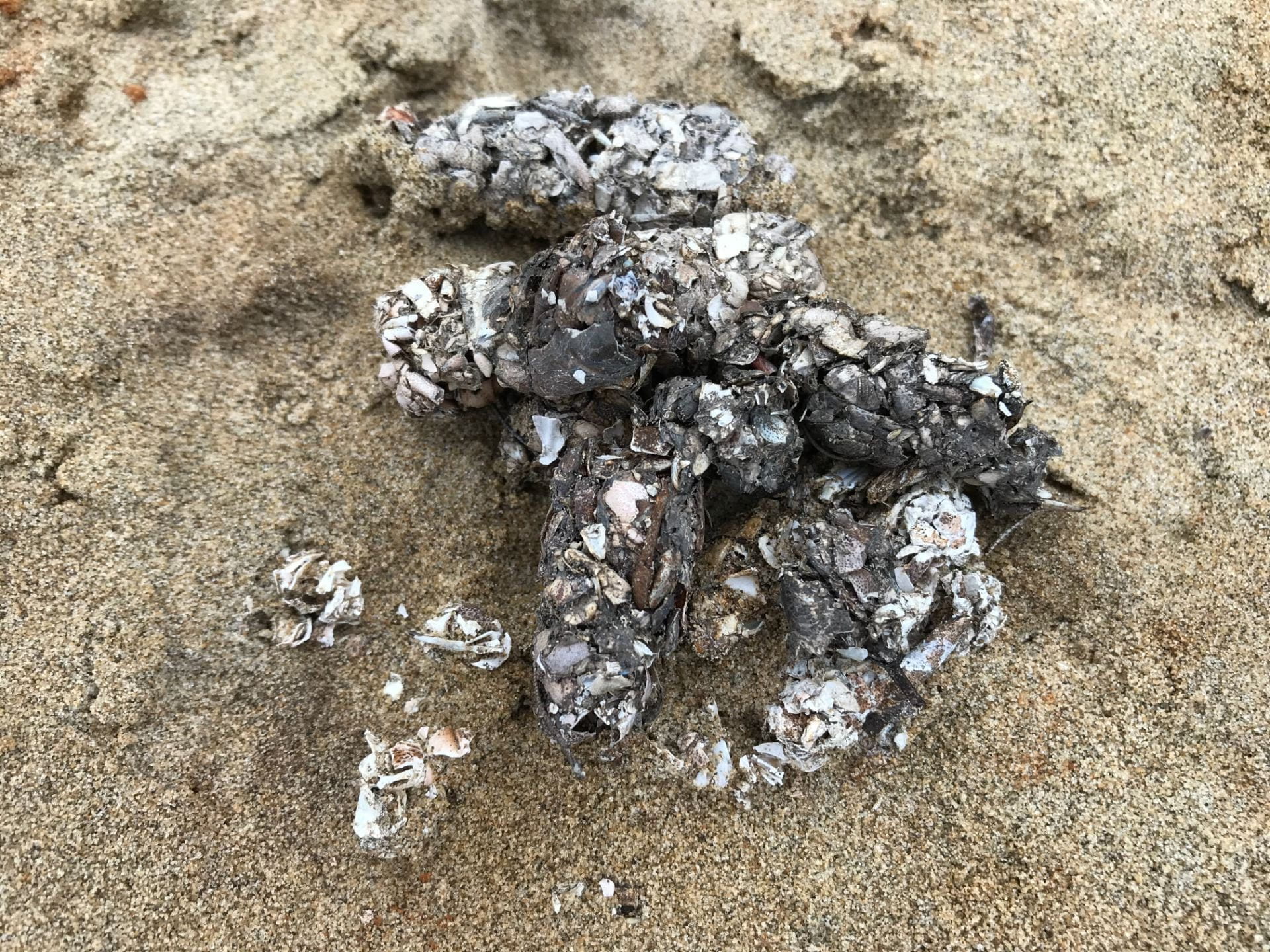
Excretions
The shape, size, quantity, compactness, composition, dispersal, and freshness of droppings can provide information about species, age, sex, health, movement patterns, feeding activity, and when the animal was in the area. This information can be used to locate animals or to estimate their population densities in order to decide whether to stay in the area or relocate. Urine and blood, too, can be used to detect and follow prey. A wounded animal can be tracked by following the blood it leaves on the ground and vegetation. The amount of blood indicates how severely the animal is wounded and whether continued pursuit is worthwhile.
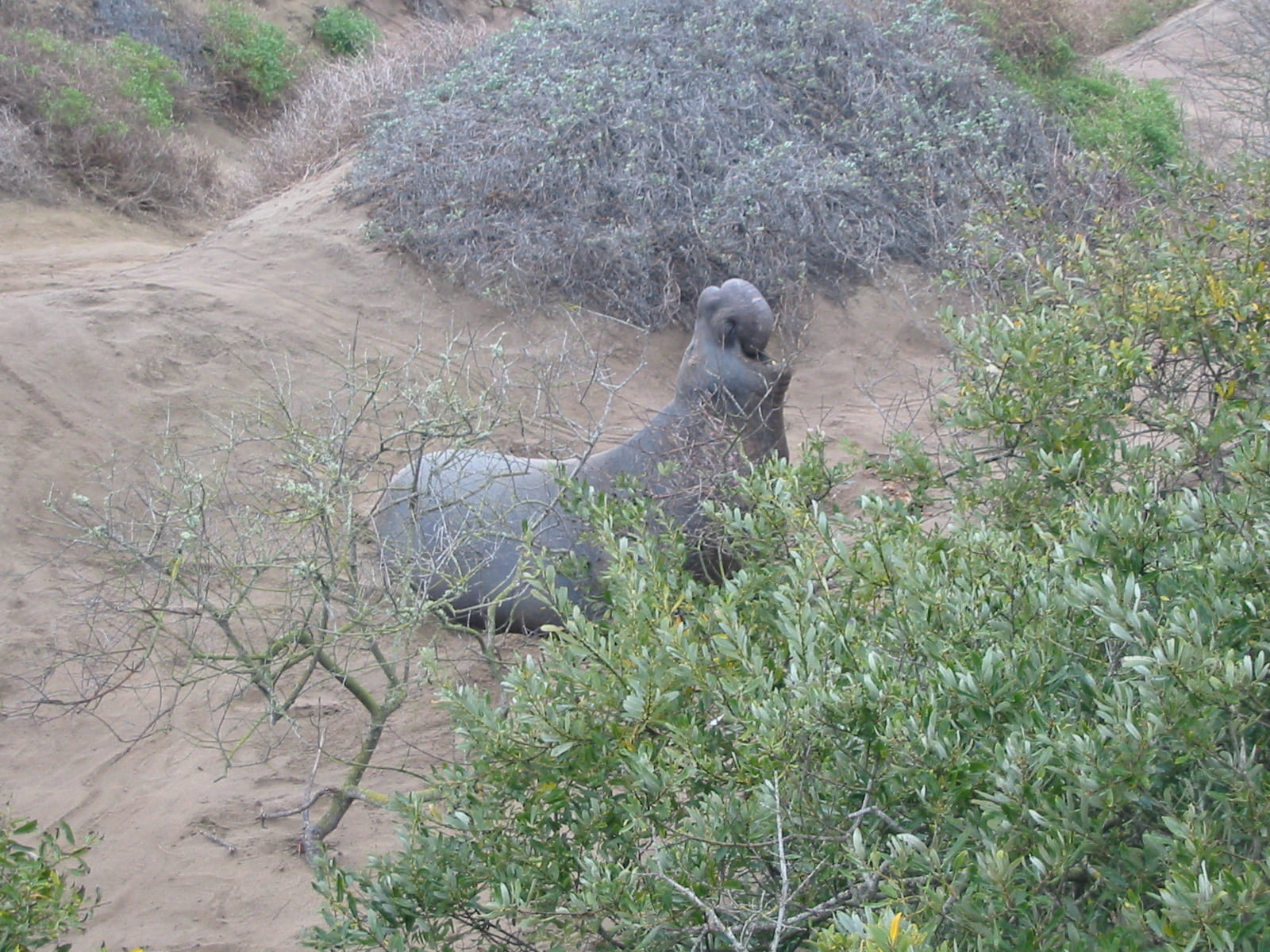
Sound
Animals can often be located by homing in on the sounds they make as they communicate with each other and move through the landscape.
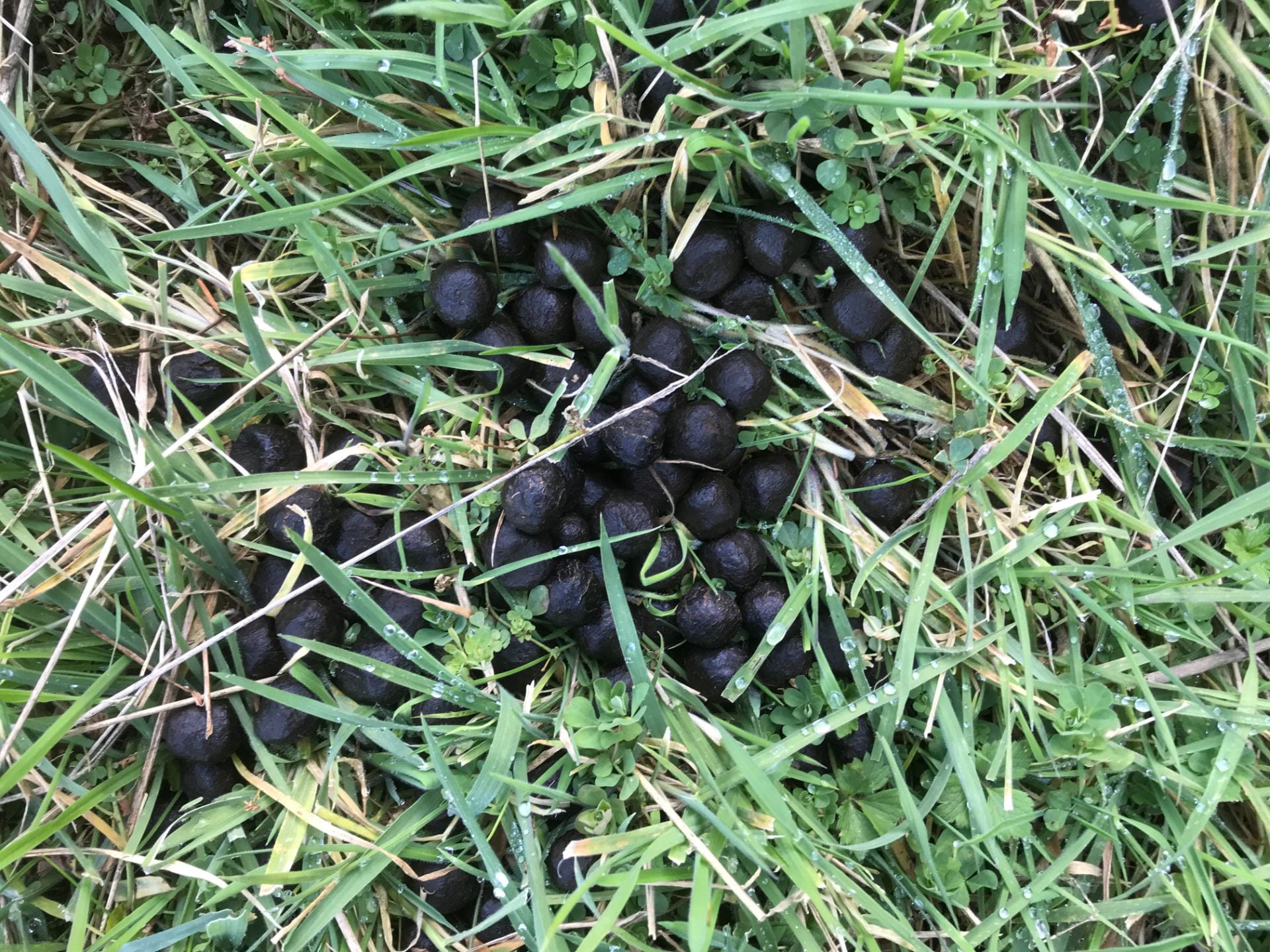
Smell
Humans have a relatively poor sense of smell, but some animals—or their feces–give off a strong odor that humans can detect from a distance.
“In the fall and early winter bull moose make noise with their antlers as they run through the willows. During the rut, bulls also rake their antlers noisily in the brush to challenge other males in the area, and they utter a low call associated with breeding. If a moose is near, it may also be detected by the sound of twigs breaking as it walks. An unusual way to find bull moose is to smell their musky odor on the river bars during the fall rut.”
—Nelson (1973:91)
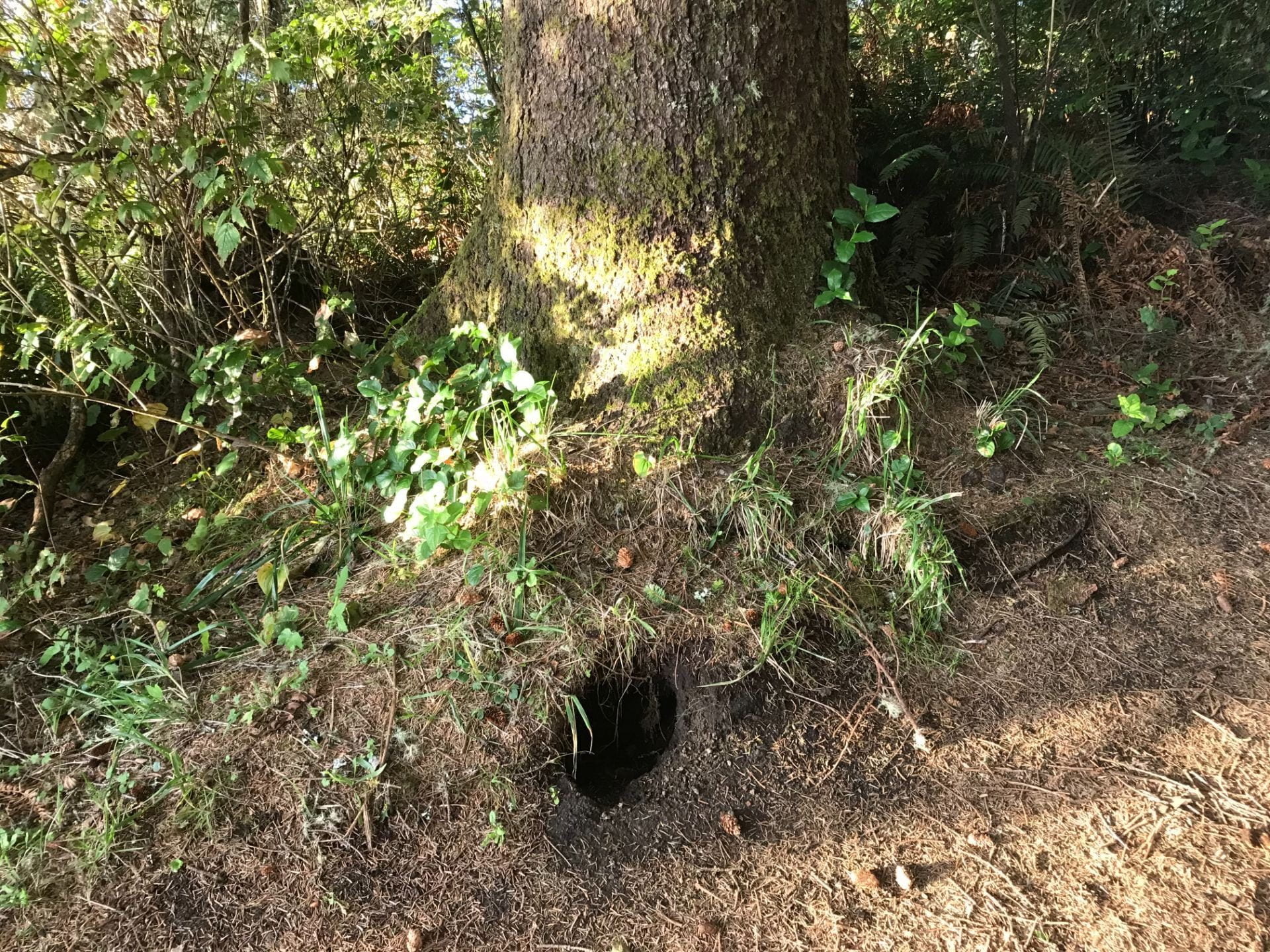
Terrain
Landscape features associated with animal diet, habitat, or behavior can be used to locate game. For example, water holes and salt licks are likely places to encounter animal tracks, and tree roots and rocky outcrops are likely places to encounter animal dens. Fresh mounds of dirt can indicate the presence of burrowing species. Telltale signs of large game, such as elk and bison, are the depressions they leave in the ground where they have slept or wallowed.
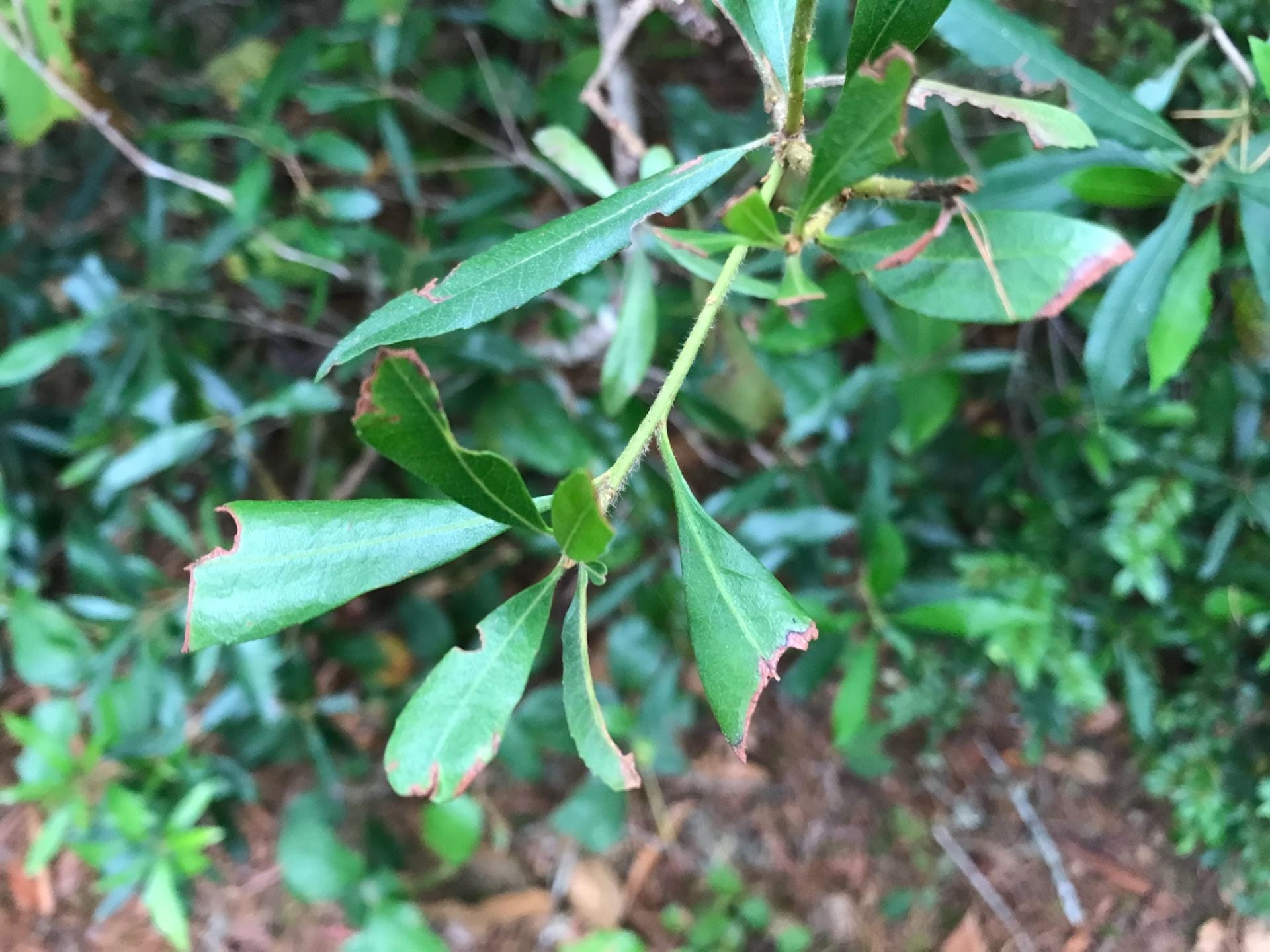
Vegetation
The effects of animal behavior on vegetation can provide cues to their current location and state. Grass, bark, shoots, or leaves that have been nibbled or that have fallen from an animal’s mouth can indicate where, when, and what it has been eating. Grass trampled or twigs broken by a passing animal can indicate its direction of travel. Some animals, such as bears, can be detected by looking for the scratches they make on tree trunks to mark their territory.
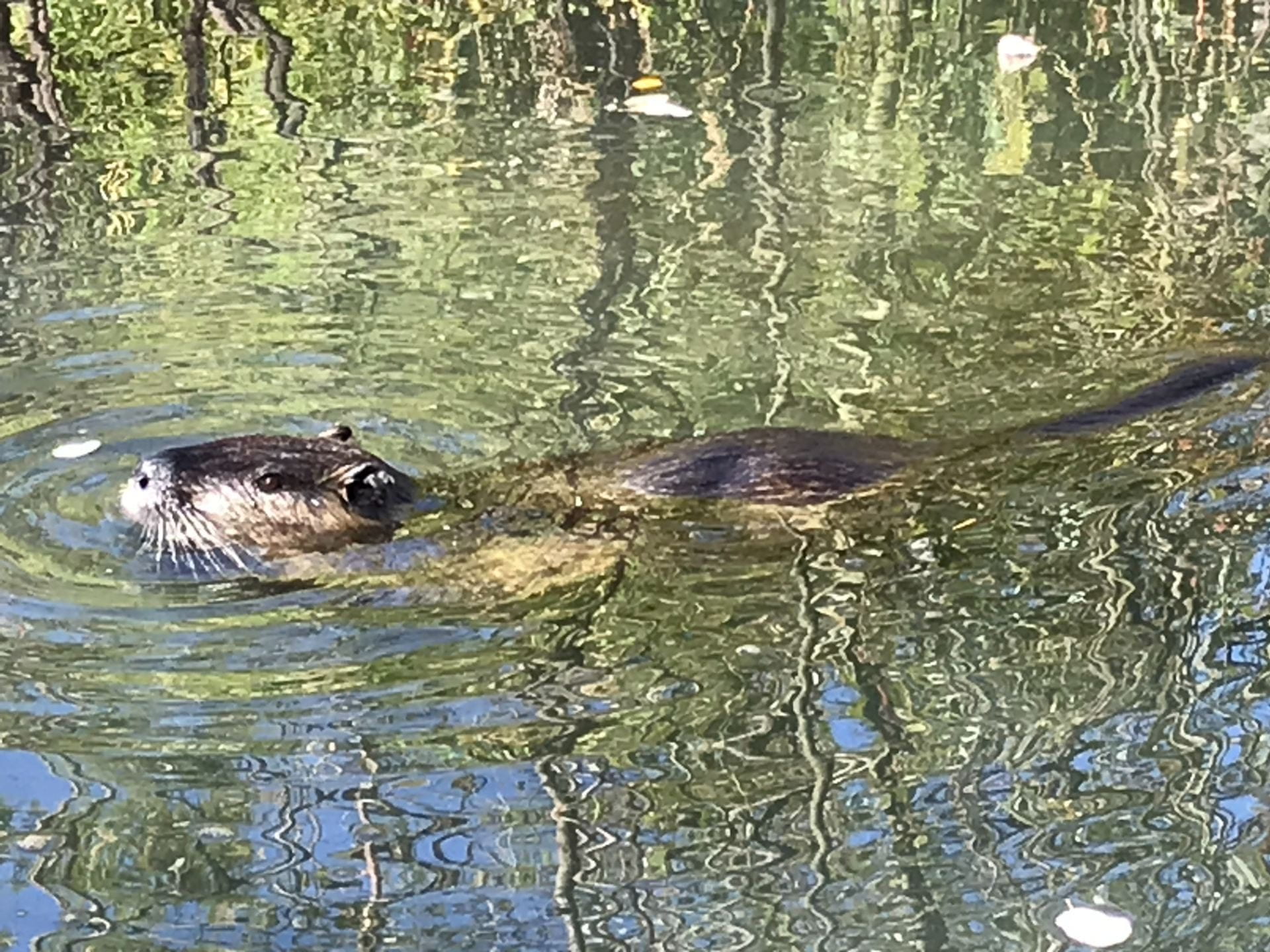
Animals
A species can provide a cue about itself in the future. For example, the current movement of a herd may indicate where it will be found later. Animals may also be located by trailing species with whom they have a symbiotic relationship. For example, Valley Bisa hunters used the morning flight path of oxpeckers to locate buffalo. Some animals give alarm calls, which can be used to detect the approach of other species. Conversely, game animals may be located by following carnivores or scavengers that feed on them.
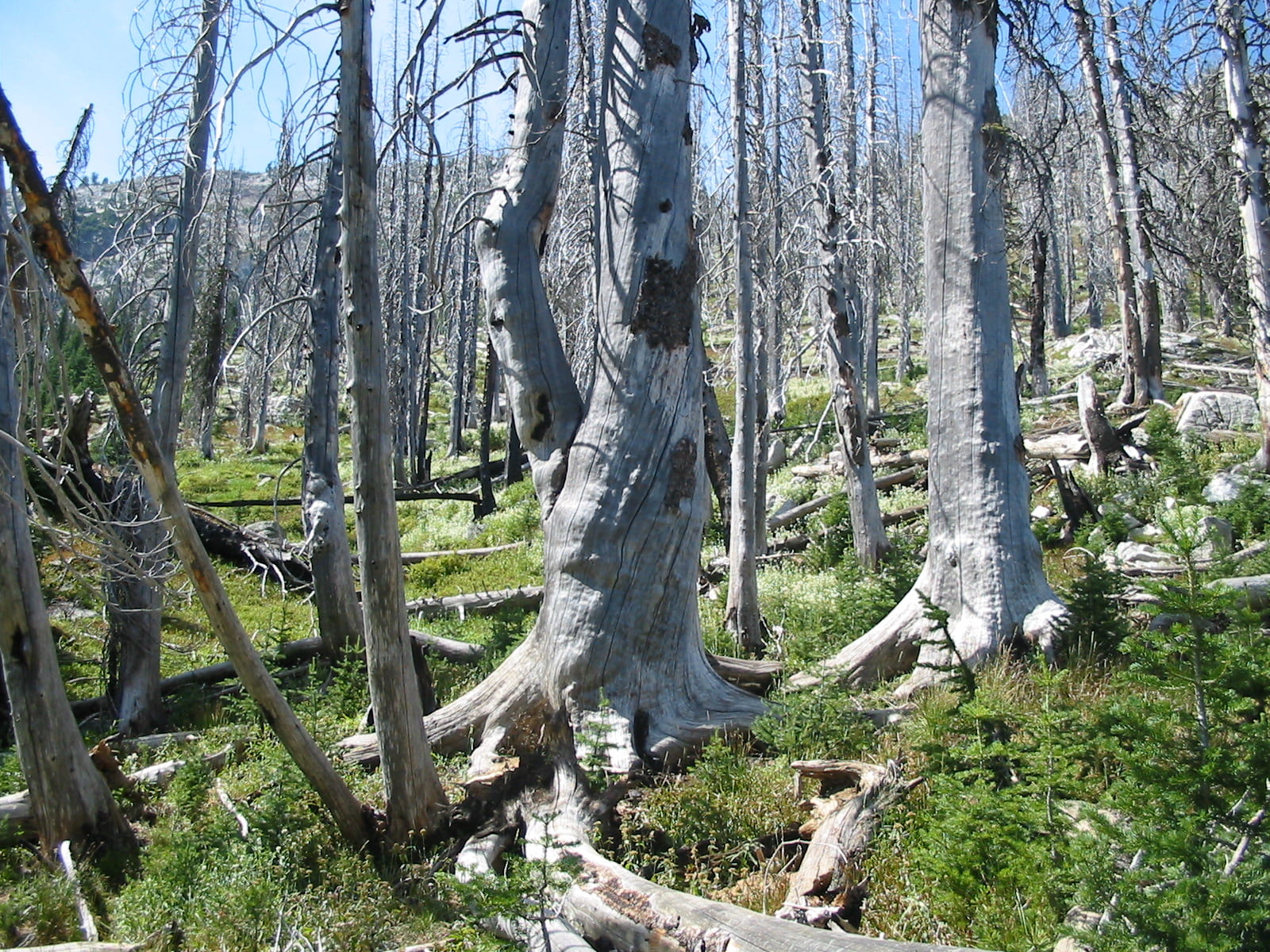
Calendar Plants
The current state of certain plant species, such as grasses and fruit-bearing trees and shrubs, may indicate the impending arrival or presence of animals that feed on them. For example, many herbivores prefer tender new shoots and preferentially graze in areas where they are present. Knowing this, Indigenous peoples across the globe traditionally used controlled burns to encourage new growth, and to create and maintain meadows in order to attract game animals.
“Another thing I find out when I go out trapping there: crows. They always travel around close to the wolf. I figure that wherever the moose goes, the crow flies around there. And when the wolf gets the moose, they share the eating. I think that’s the only way a person can figure it out. That’s how come they are brothers-in-law.”
—Yukon hunter Frank Joe (McClellan 1987:267)
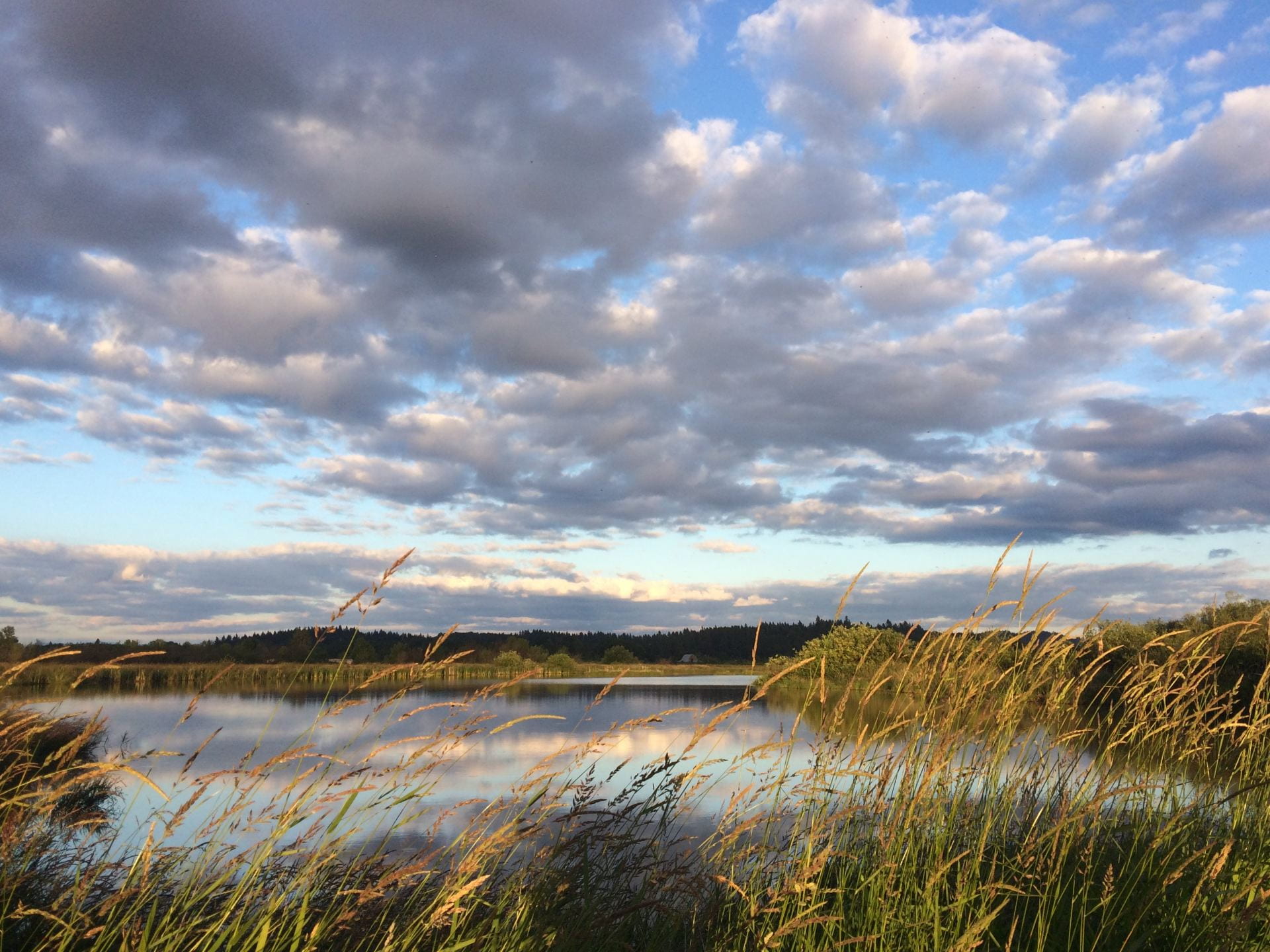
Weather
Weather conditions affect the availability of the resources animals depend on. In arid environments, for example, animals must periodically move to places where adequate water is available; thus, foragers can locate game by observing where rain falls. In cold climates, the onset of freezing weather indicates that many game animals will soon be migrating or hibernating; conversely, melting snow and ice indicate that they will soon be returning.
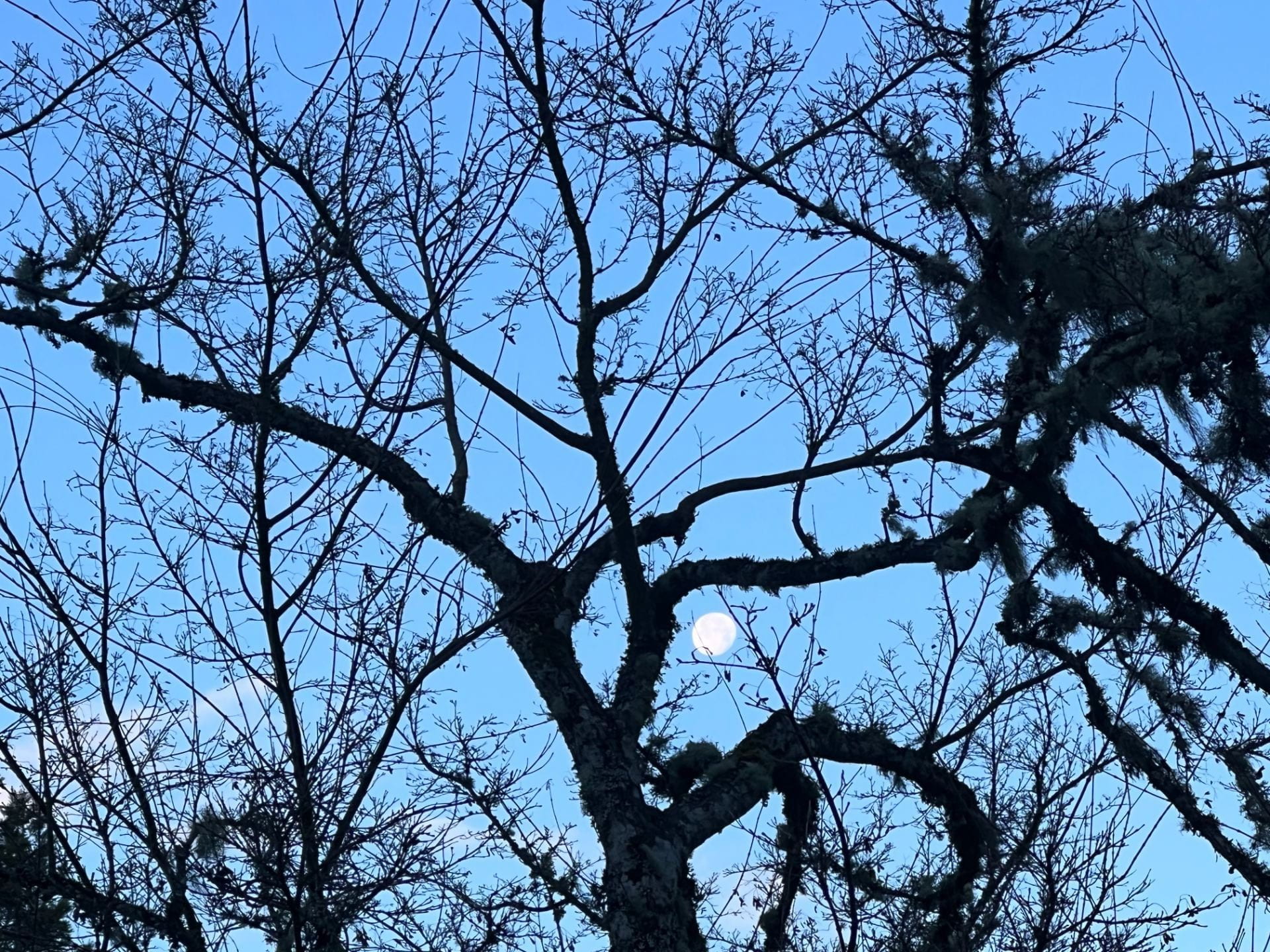
Celestial Objects
The position, rising, and setting of the moon and stars vary across the year. These can be used to predict seasonal variation in tides, weather, and resource availability. In Arnhem Land, for example, the dawn rising of Orion signaled the birth of dingo pups, an important food resource. For the Arawak and Warao, the Southern Cross represented the black curassow (Crax alector), which was hunted at the time of year when the constellation is oriented vertically.
Photos by Michelle Scalise Sugiyama
